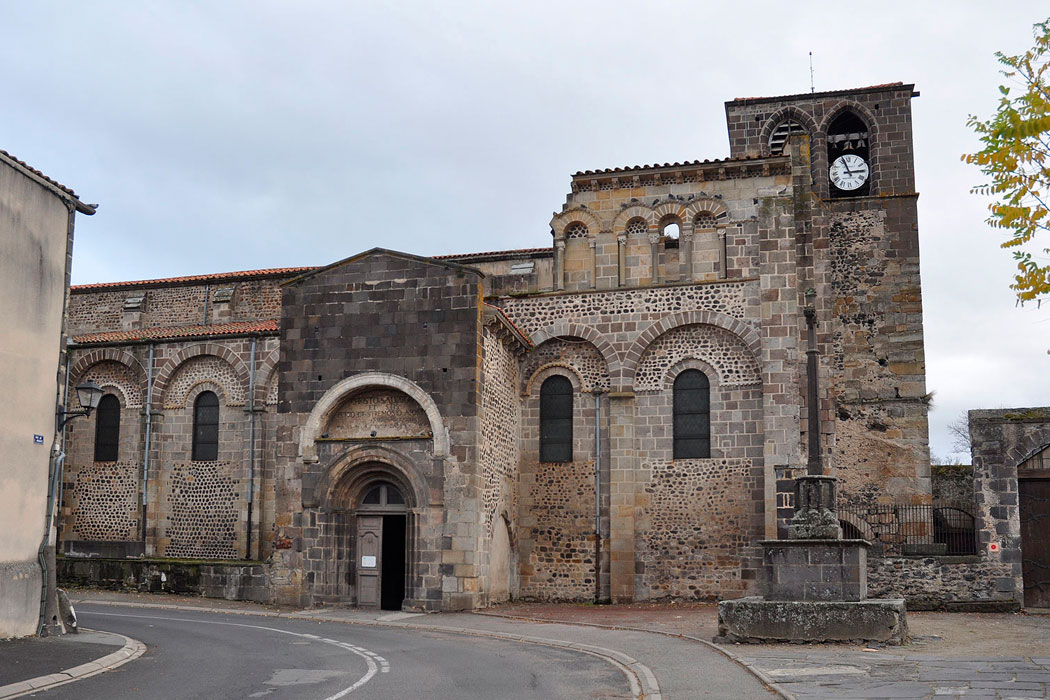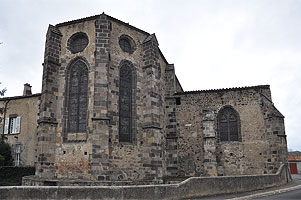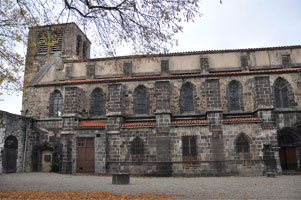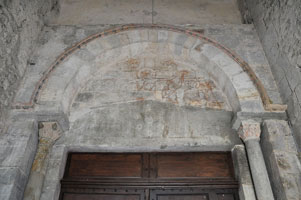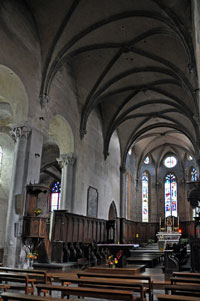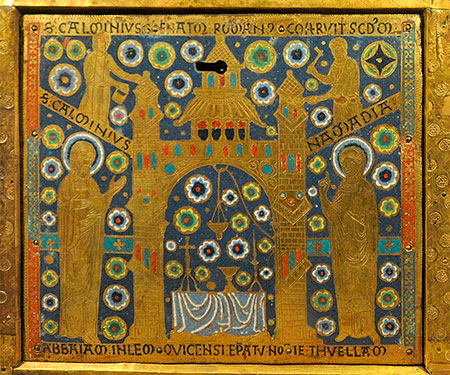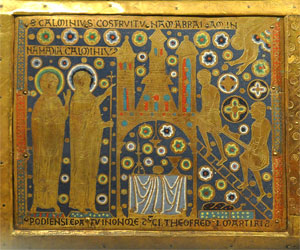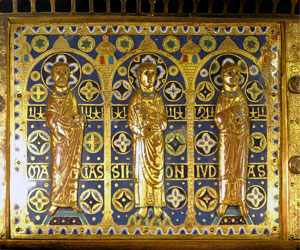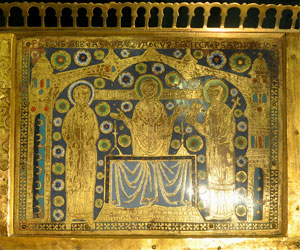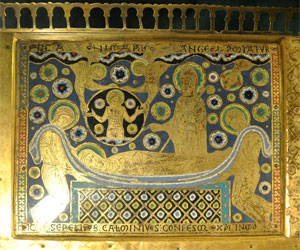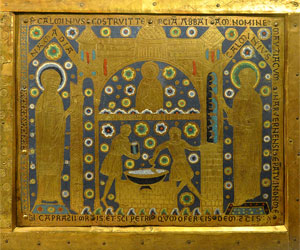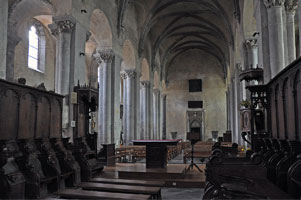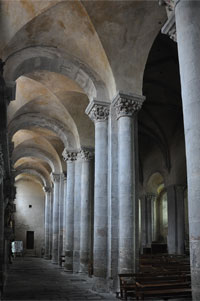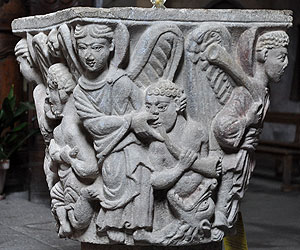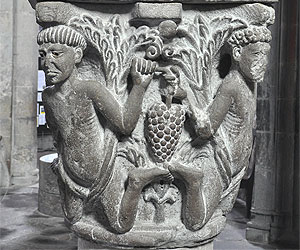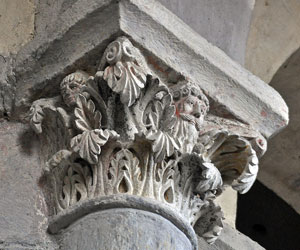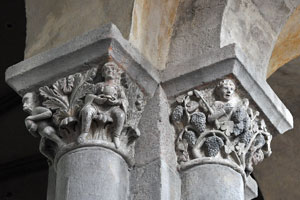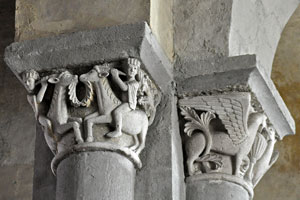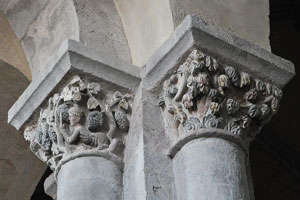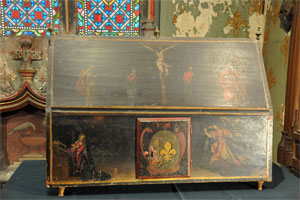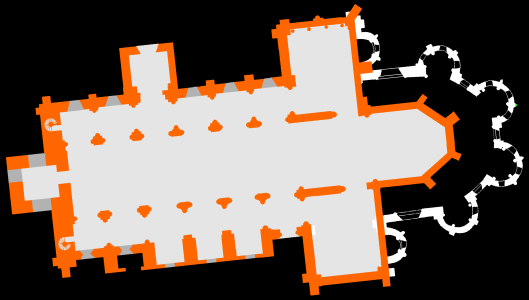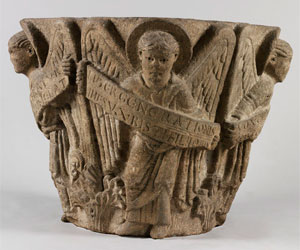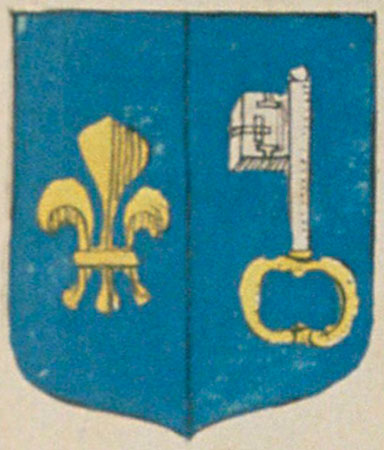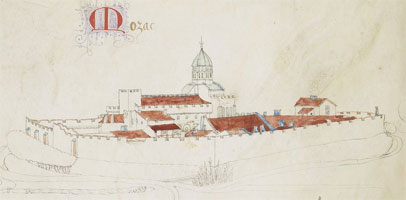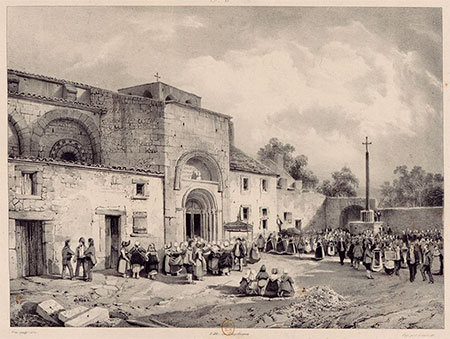The abbey of Mozac (also known as Mozat) is one of the major monastic sites in Auvergne, both for its historical significance and for the architectural remains and furnishings that have survived despite the many adverse events it has endured. Its origins are very ancient: tradition attributes its foundation to Saint Calminius, a 7th-century figure who was also the driving force behind other monastic houses such as Saint-Chaffre (Haute-Loire) and Marsat (Puy-de-Dôme).
The first buildings erected on this site date back to the 7th century. In 848, the relics of Saint Austromoine (3rd century) were brought here from the priory of Volvic (Puy-de-Dôme), where they had previously been kept after arriving from the abbey of Saint-Austremoine of Issoire, also in the same département. King Pippin II of Aquitaine (r. 843–848) played an active role in the translation of the relics and accompanied their arrival with a generous donation. Possession of the relics and the resulting influx of pilgrims gave a major impetus to the monastery, leading to the construction of a large new church, of which some elements are still preserved.
By the late 11th century, the abbey was in decline, which led, in 1095, the count of Auvergne, in agreement with the bishop of Clermont, to grant Mozac to the abbey of Cluny (Saône-et-Loire), despite opposition from part of the community. From then on, the house remained attached to the Burgundian abbey, though there were episodes of resistance that lasted until the 13th century. During the second half of the 14th century Mozac suffered from the Hundred Years’ War, which made it necessary to fortify the monastery. By the end of the century, the discipline of the community had also weakened and its numbers had been halved.
In the 15th century the site was struck by the earthquakes that affected the region, and the monastery’s buildings were severely damaged. Extensive reconstruction works were undertaken, but because of the abbey’s decline they affected only part of the structures; the Romanesque Auvergnat chevet with its ambulatory was lost. The nave also lost height and the tribunes disappeared.
From 1516 onwards the house was ruled by commendatory abbots. In 1595 Mozac suffered from the Wars of Religion, although the losses were relatively minor and limited to the demolition of the defensive structures—towers, moats and walls. Nevertheless, the abbey went into decline and internal conflicts became more frequent. In 1664 the monastery was reformed under the Congregation of Saint-Maur, which remained in place until the Revolution, when the house was suppressed and the small community of only six monks dispersed.
The church is the best-preserved part of the monastic complex and reflects the many building campaigns carried out over the centuries. The oldest surviving elements are in the tower attached to the western façade of the original church, which retains traces from the 10th and 11th centuries. The crypt also belongs to this period. The church was enlarged in the 12th century into a three-aisled structure with six bays, a transept and a chevet—features that have undergone major alterations yet still preserve a medieval appearance.
The most altered part is the chevet, now with a polygonal central apse that replaced the earlier one in the 15th century. At that time the cloister and adjacent buildings were also rebuilt. The church is renowned for its remarkable series of Romanesque capitals, distinguished by their sculptural quality that sets them apart from other examples in the region. Several large capitals from the columns of the lost ambulatory have also survived.
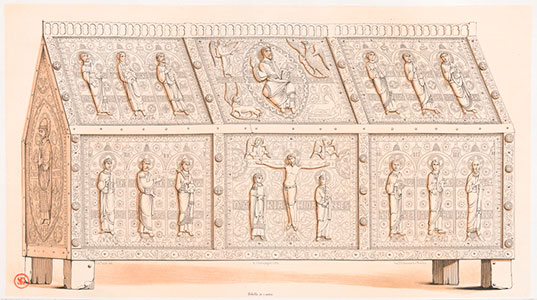
Châsse of Saint Calminius (s. XII)
Illustration from L'ancienne Auvergne et le Velay (1843)
Particularly noteworthy is the splendid “Châsse of Saint Calminius”, a large Limoges-enamel reliquary. According to an inscription on the piece, it was commissioned during the abbacy of Peter, around 1172, and was completed by the end of the century. The enamelling technique differs between the front and back: the front features gilded relief figures executed in champlevé, depicting Christ among the Evangelists, a Crucifixion and four compartments of the Apostles; the back shows scenes related to Saint Calminius, his wife Namadia, and the abbey of Mozac itself. The Thomas Dobrée Museum in Nantes preserves a 13th-century enamelled processional cross, also from Mozac.

The Three Marys at the tomb
- BEAUNIER, Dom (1912). Abbayes et prieurés de l'ancienne France. Vol. 5. Bourges. Abbaye de Ligugé
- CABRERO-RAVEL, Laurence (2003). Saint-Pierre de Mozac : L’abbatiale romane. Congrès archéologique de France. 158 ss. Basse-Auvergne, Grande Limagne. Société Française d’Archéologie
- CRAPLET, Bernard (1972). Auvergne romane. La nuit des temps, 2. Zodiaque
- CRAPLET, Bernard (2002). Abbatiale Saint-Pierre. Mozac. Moisenay: Gaud
- CRAPLET, Bernard (s/d). L'abbaye Saint-Pierre de Mozat. Lyon: Lescuyer
- GOMOT, Hippolyte (1872). Histoire de l’abbaye de Mozat. París: Aubry
- HÉNAULT, Denis (2012). L’abbatiale romane Saint-Pierre de Mozac et l’héritage de l’Antiquité. Un projet monumental au service des prétentions d’une communauté monastique. Cahiers de civilisation médiévale, 217
- HÉNAULT, Denis (2017). L’abbaye Saint-Pierre de Mozac. Presses Universitaires de Rennes
- LEVILLAIN, L. (1904). La translation des reliques de saint Austremoine à Mozac et le diplôme de Pépin II d'Aquitaine (863). Le Moyen âge, vol. 2-VIII
- MICHEL, Adolphe (1843). L'ancienne Auvergne et le Velay. Histoire, archéologie, moeurs, topographie IV. Atlas. Moulins
- PERONA, Matthieu (2017). La formation du territoire de Mozac. Des limites médiévales de la justice de l’abbaye à la commune de Mozac. Bulletin Historique et Scientifique de l’Auvergne, 118
- PERONA, Matthieu (2021). Châsse dite de saint Austremoine (église abbatiale Saint-Pierre de Mozac). HAL-04281172
- SAINT-MAUR, Congregació de (1720). Gallia Christiana in provincias ecclesiasticas distributa. Vol. 2. París: Typographia Regia
- TAYLOR, J.; i altres (1829). Voyages pittoresques et romantiques dans l'ancienne France. Auvergne. París: Firmin Didot
